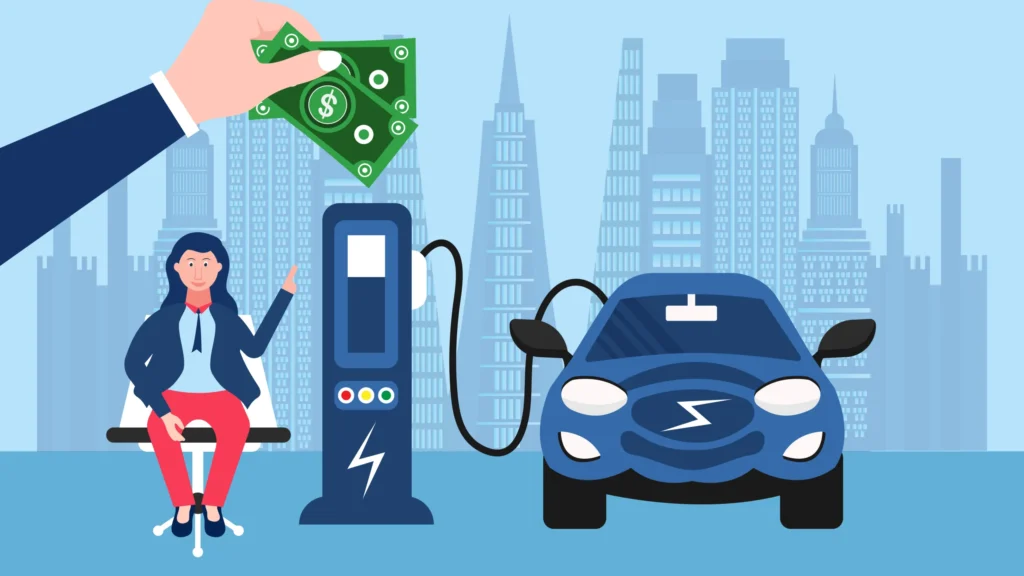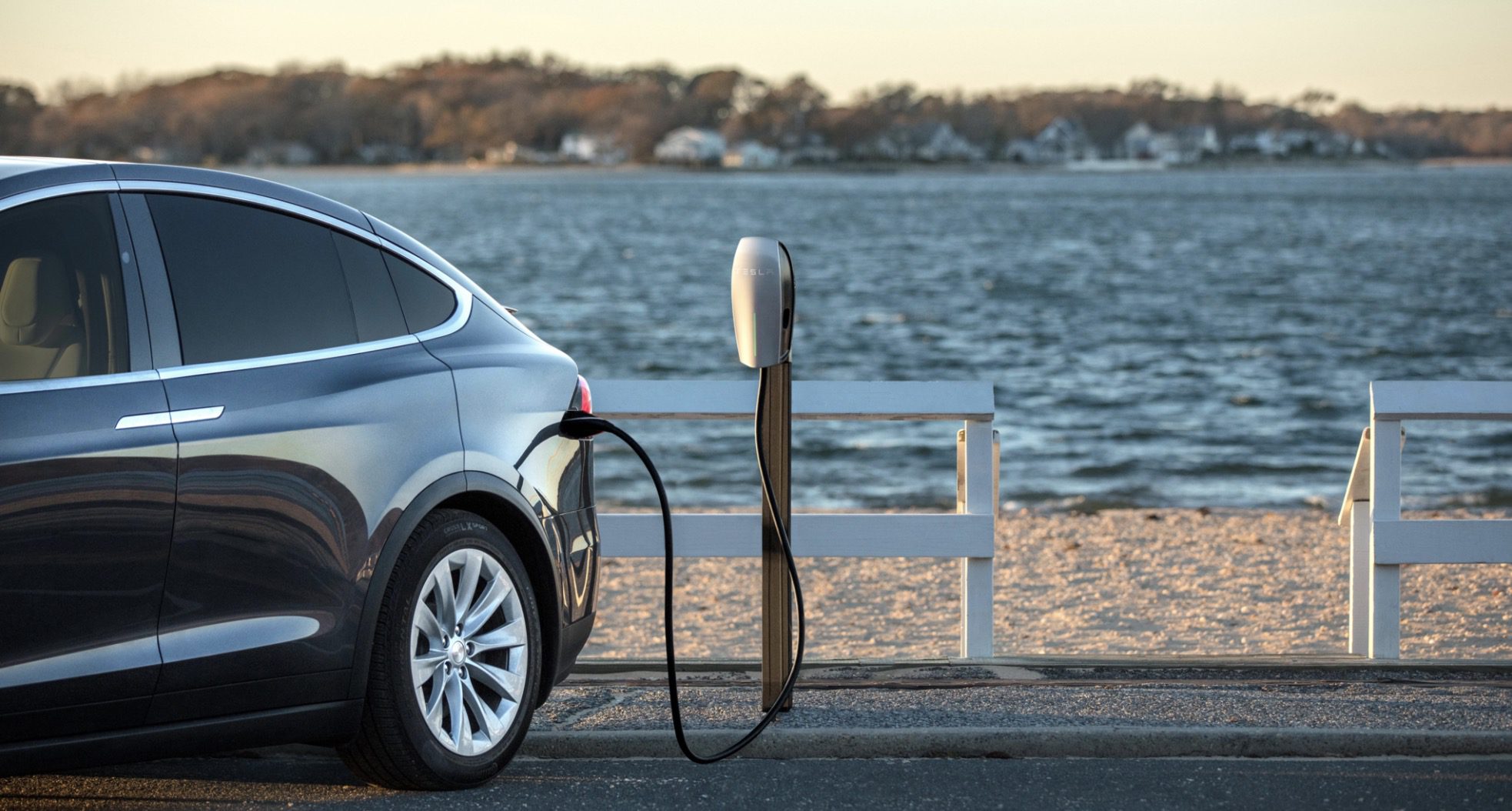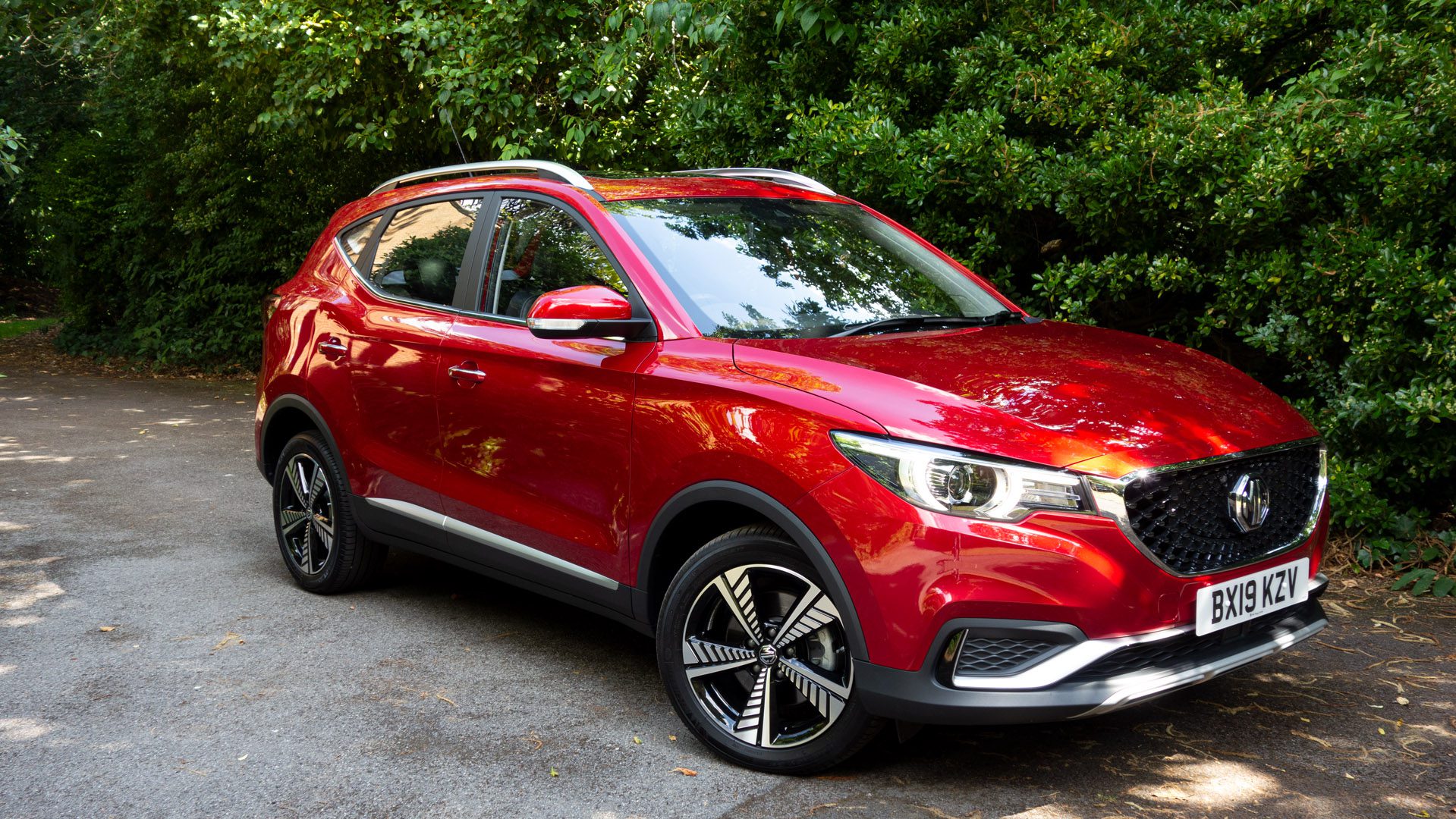Table of Contents
Switching to an electric vehicle (EV) is a smart move, not just for the environment but also for your wallet. With EV tax credits and incentives, you can significantly reduce the upfront cost of purchasing an electric or plug-in hybrid vehicle. However, many car buyers miss out on these savings simply because they don’t understand how the tax credit works or how to claim it properly.
This guide will walk you through everything you need to know about EV tax credits, from eligibility requirements to step-by-step instructions on how to claim them. Whether you’re buying a new, used, or commercial EV, this article will help you maximize your savings and avoid common mistakes.
What This Guide Covers
To ensure you get the biggest possible savings, we’ll cover:
- What the EV tax credit is and how it works.
- Who qualifies for the credit (including car models, income limits, and more).
- How to claim the credit when filing your taxes.
- How to take advantage of point-of-sale discounts at dealerships.
- Additional state and local incentives to further cut costs.
- Common mistakes to avoid when applying for the credit.
By the end of this guide, you’ll have a clear roadmap to securing your EV tax credit and making an informed purchase.
What is the EV Tax Credit?
Electric Vehicle tax credits are financial incentives designed to make EVs more affordable and encourage the transition to cleaner transportation. If you purchase a qualifying EV, you may be eligible for a federal tax credit that reduces the amount of income tax you owe, potentially saving you up to $7,500 on a new EV or up to $4,000 on a used one.
However, these tax credits are subject to specific eligibility requirements, which depend on factors like the vehicle’s battery size, where it was manufactured, its price, and even your income level.

How the EV Tax Credit Works
The EV tax credit is a nonrefundable credit, meaning it can reduce your tax bill but won’t result in a refund if the credit exceeds your tax liability. For example, if you owe $5,000 in federal taxes and qualify for a $7,500 tax credit, your tax bill would be reduced to $0—but you wouldn’t receive the remaining $2,500 as a refund.
Types of EV Tax Credits
There are three main types of EV tax credits available under U.S. federal law:
1. New EV Tax Credit (Up to $7,500)
- Available for newly purchased electric vehicles that meet specific manufacturing and battery component requirements.
- The full $7,500 amount is split into two parts:
- $3,750 for meeting battery mineral sourcing requirements.
- $3,750 for meeting battery component manufacturing requirements.
- Certain vehicles do not qualify if their battery components are sourced from restricted countries.
2. Used EV Tax Credit (Up to $4,000)
- Available for used electric vehicles at least two years old.
- The credit is 30% of the purchase price, up to a maximum of $4,000.
- Only available for vehicles costing $25,000 or less.
- Buyers must purchase from a licensed dealer (private sales do not qualify).
3. Commercial EV Tax Credit
- Available for businesses purchasing EVs for commercial use.
- The amount varies based on the vehicle’s weight and battery size, with a maximum of $7,500 for light-duty vehicles and up to $40,000 for heavy-duty electric trucks.
Source: IRS official guidance on Clean Vehicle Tax Credits (IRS.gov)
Why Are EV Tax Credits Offered?
The U.S. government provides these tax credits as part of efforts to:
- Reduce greenhouse gas emissions by encouraging more EV adoption.
- Support domestic EV production by requiring North American assembly and battery manufacturing.
- Make EVs more affordable and accessible to a wider range of consumers.
These incentives are part of a broader strategy to transition away from fossil fuels and reach net-zero emissions by 2050, as outlined in the Inflation Reduction Act (IRA) of 2022.
Eligibility Criteria: Do You Qualify?

Not all electric vehicles or buyers qualify for the EV tax credit. The eligibility criteria are based on factors such as the vehicle’s manufacturing location, battery composition, price, and the buyer’s income level. Understanding these requirements is crucial to ensuring you can claim the credit.
Eligibility for New Electric Vehicles
To qualify for the federal EV tax credit, the vehicle must meet several key conditions:
Manufacturing and Assembly Requirements
Under current U.S. laws, the EV must be assembled in North America to be eligible for the tax credit. This requirement ensures that domestic and regional manufacturing facilities benefit from the transition to clean energy. The IRS provides a Vehicle Identification Number (VIN) lookup tool to help buyers verify a car’s eligibility before purchase.
Battery Component and Sourcing Requirements
The tax credit is divided into two parts, each worth $3,750, depending on whether the vehicle meets battery-related conditions:
- Battery Component Requirement – A certain percentage of the EV’s battery components must be manufactured or assembled in North America.
- Critical Mineral Requirement – A percentage of the battery’s minerals, such as lithium and cobalt, must be sourced from the U.S. or a free trade agreement (FTA) partner country.
As these requirements evolve, some vehicles that previously qualified may no longer be eligible. Buyers should always check the latest IRS guidelines before making a purchase.
Price Cap for Eligible Vehicles
Not all EVs qualify for the credit due to price restrictions. To be eligible, the manufacturer’s suggested retail price (MSRP) must be:
- $80,000 or less for vans, SUVs, and pickup trucks.
- $55,000 or less for sedans and other passenger cars.
This cap prevents luxury EVs from benefiting from the program, ensuring that the incentive is targeted at more affordable options.
Eligibility for Used Electric Vehicles
The used EV tax credit follows different rules. To qualify, the vehicle must be:
- At least two years old at the time of purchase.
- Purchased from a licensed dealer rather than through a private sale.
- Priced at $25,000 or less to ensure affordability.
Additionally, buyers can only claim the used EV credit once every three years and must not be the original owner of the vehicle.
Buyer Eligibility: Income Limits and Restrictions
Beyond vehicle requirements, individual buyers must also meet income thresholds. The credit is not available to high-income individuals, as it is intended to support middle- and lower-income consumers. The income limits are based on modified adjusted gross income (MAGI) and are as follows:
- $150,000 for single filers
- $225,000 for head of household filers
- $300,000 for joint filers
For used EVs, the income limits are lower:
- $75,000 for single filers
- $112,500 for head of household filers
- $150,000 for joint filers
Buyers must use their current or prior year’s income to determine eligibility, choosing whichever year allows them to qualify.
Leasing vs. Buying: How It Affects the Credit
Leasing an EV does not allow the consumer to claim the tax credit directly. Instead, the leasing company—which technically owns the vehicle—can claim the credit and may choose to pass the savings along to the lessee through lower lease payments. This can sometimes make leasing an attractive option, even if the credit is not directly applied.
However, buying an EV provides more direct financial benefits, as long as the buyer meets all qualifications and has sufficient tax liability to claim the full credit.
Verifying Vehicle and Buyer Eligibility
Before purchasing an EV, it is essential to:
- Check the IRS eligibility list for qualifying models.
- Verify the vehicle’s final assembly location using the VIN lookup tool on the Department of Energy’s website.
- Ensure that your income falls within the eligibility limits to claim the credit.
Taking these steps will help prevent issues when filing for the tax credit and ensure that buyers can maximize their savings.
Source: U.S. Department of Energy – Clean Vehicle Tax Incentives (Energy.gov).
How to Claim the EV Tax Credit (Step-by-Step Guide)

Once you have confirmed that both you and your vehicle qualify for the EV tax credit, the next step is to properly claim it. The process involves filing specific tax forms, keeping the necessary documentation, and understanding how the credit applies to your tax situation.
Claiming the Credit When Filing Taxes
To receive the EV tax credit, buyers must file for it when submitting their federal income tax return for the year in which they purchased the vehicle. Since this is a nonrefundable credit, it will reduce your total tax liability but will not result in a refund if the credit exceeds what you owe.
Here is a step-by-step guide to claiming the tax credit:
Step 1: Confirm Eligibility Before Purchase
- Verify that the EV qualifies for the credit by checking the IRS list of eligible vehicles.
- Use the VIN lookup tool on the Department of Energy’s website to confirm the final assembly location.
- Ensure that your income meets the eligibility limits for the credit.
Step 2: Obtain Required Documents
After purchasing the EV, keep the following documents for tax filing:
- The purchase agreement or sales invoice, which includes the vehicle’s price and VIN.
- A copy of the manufacturer’s certification confirming eligibility for the tax credit.
- Any state-level incentive documents, if applicable.
Step 3: Fill Out IRS Form 8936
- The EV tax credit is claimed using IRS Form 8936: Qualified Plug-in Electric Drive Motor Vehicle Credit.
- This form requires information about the vehicle, including its make, model, VIN, and purchase price.
- Once completed, the form is submitted along with your federal tax return (Form 1040).
Step 4: Apply the Credit to Your Tax Return
- The credit will reduce the amount of federal income tax owed for the year.
- If the credit is larger than your total tax liability, the remaining balance will not be refunded or carried forward to future years.
- For buyers with low tax liability, consulting a tax professional can help determine the best way to maximize the credit’s value.
Claiming the EV Tax Credit at the Point of Sale
Starting in 2024, eligible buyers have the option to apply the EV tax credit at the time of purchase, reducing the vehicle’s upfront cost rather than waiting until tax season. This is done through a point-of-sale credit transfer to the dealership.
How the Point-of-Sale Credit Works
- The buyer transfers the tax credit to the dealership, allowing them to immediately reduce the purchase price of the EV.
- This option benefits consumers who may not have enough tax liability to take full advantage of the credit when filing taxes.
- Not all dealerships may participate in the program, so buyers should confirm eligibility before finalizing their purchase.
Filing Considerations and Common Mistakes
When claiming the EV tax credit, buyers should avoid these common mistakes:
- Purchasing an ineligible vehicle – Always verify that the EV meets federal requirements before buying.
- Failing to retain documentation – Keep all purchase records, including the sales agreement and manufacturer’s certification.
- Overestimating the credit – The tax credit amount depends on the vehicle’s battery components and sourcing requirements. Some EVs may qualify for only a partial credit.
- Misunderstanding tax liability – Since this is a nonrefundable credit, buyers must owe enough in taxes to benefit fully.
Verifying Tax Credit Amount Before Filing
Before submitting a tax return, it is advisable to:
- Use the IRS website to confirm that the vehicle qualifies for the full credit.
- Consult with a tax professional if unsure about eligibility or tax implications.
- Double-check that IRS Form 8936 is correctly completed and attached to the tax return.
Following these steps ensures that the credit is claimed correctly.
State and Local EV Incentives: Additional Savings
While the federal EV tax credit offers significant savings, many state and local governments provide additional incentives that can further reduce the cost of purchasing and owning an electric vehicle. These incentives vary widely by location and may include rebates, tax credits, reduced registration fees, and other financial perks.
Types of State and Local EV Incentives
State EV Rebates and Tax Credits
Several states offer direct rebates or state-level tax credits that can be applied alongside the federal tax credit. These incentives typically range from a few hundred to several thousand dollars, depending on the state and the type of EV purchased.
For example:
- California’s Clean Vehicle Rebate Project (CVRP) provides rebates of up to $7,500 for eligible EVs, depending on income and vehicle type.
- Colorado offers a state tax credit of up to $5,000 for new EV purchases.
- New York’s Drive Clean Rebate provides up to $2,000 off the purchase of a qualifying EV.
Since these incentives frequently change, buyers should check their state’s energy or transportation department website for the latest details.
Reduced Registration Fees and Other Perks
Some states encourage EV adoption by offering reduced registration fees, tax exemptions, or lower vehicle license fees. Additionally, certain states provide access to high-occupancy vehicle (HOV) lanes, even when driving alone, which can be a valuable perk in congested urban areas.
Examples include:
- Virginia and Arizona allow EVs to use HOV lanes without a carpool pass.
- Washington and New Jersey offer sales tax exemptions on new EV purchases.
- Illinois and Oregon provide discounted registration fees for electric vehicle owners.
Utility Company Rebates and Charging Incentives
Beyond state governments, many local utility companies offer incentives for EV buyers, particularly for installing home charging stations. These rebates typically range from $250 to $1,500 for purchasing and installing Level 2 chargers.
For example:
- Pacific Gas & Electric (PG&E) in California provides rebates for EV owners who install smart home chargers.
- Duke Energy in North Carolina offers up to $500 for residential charging station installation.
- Xcel Energy in Colorado has time-of-use electricity rates that reduce charging costs.
How to Find State and Local Incentives
Since EV incentives change frequently, the best way to stay updated is to:
- Visit the U.S. Department of Energy’s Alternative Fuels Data Center (afdc.energy.gov) for a searchable database of federal, state, and local incentives.
- Check state government websites for official rebate and tax credit programs.
- Contact local utility companies to ask about home charging rebates and special electricity rates for EV owners.
By combining federal, state, and local incentives, EV buyers can significantly reduce their upfront costs and long-term ownership expenses. Keeping track of available programs ensures that buyers maximize their savings when purchasing an electric vehicle.
Commercial & Business EV Tax Credits

Businesses and commercial fleet operators looking to invest in electric vehicles (EVs) may qualify for separate tax incentives under the Commercial Clean Vehicle Credit program. Unlike the personal EV tax credit, this credit has different eligibility requirements and does not have income restrictions or a tax liability limitation, making it a valuable option for businesses.
How the Commercial EV Tax Credit Works
The Commercial Clean Vehicle Credit is available to businesses, nonprofits, and other eligible entities that purchase new electric or fuel-cell vehicles for commercial use. The credit amount is based on the vehicle’s size and battery capacity, calculated as follows:
- 30% of the vehicle’s purchase price for electric or fuel-cell vehicles.
- 15% of the purchase price for plug-in hybrid vehicles.
- The maximum credit per vehicle is:
- $7,500 for light-duty vehicles (under 14,000 lbs).
- $40,000 for heavy-duty vehicles (over 14,000 lbs).
Unlike the personal EV credit, the commercial credit is not subject to income limits or a tax liability cap, meaning businesses can fully benefit from the incentive regardless of their tax situation.
Key Differences Between Personal and Commercial EV Credits
| Feature | Personal EV Tax Credit | Commercial EV Tax Credit |
|---|---|---|
| Eligibility | Individual taxpayers | Businesses, nonprofits, and other entities |
| Maximum Credit | Up to $7,500 | Up to $40,000 |
| Tax Liability Requirement | Nonrefundable (limited to tax owed) | Can be used fully, regardless of tax liability |
| Vehicle Requirements | Must meet final assembly and battery sourcing rules | No domestic sourcing or assembly requirements |
| Income Limits | Yes (based on MAGI) | No income restrictions |
The lack of sourcing and assembly requirements for commercial vehicles makes this credit more accessible, especially for businesses purchasing EVs that may not qualify for the personal credit due to battery sourcing rules.
Who Qualifies for the Commercial EV Tax Credit?
The credit applies to a variety of business entities, including:
- Corporations, LLCs, and sole proprietors purchasing EVs for business use.
- Rideshare operators adding EVs to their fleet.
- Delivery services (e.g., Amazon, FedEx, UPS) transitioning to electric fleets.
- Public transit agencies investing in electric buses.
- Nonprofits and government organizations adopting clean energy vehicles.
To qualify, the vehicle must be used for business purposes at least 50% of the time. Personal use does not count toward eligibility.
How to Claim the Commercial EV Tax Credit
Businesses can claim the tax credit when filing their annual tax return by:
- Purchasing a qualifying EV that meets the weight and battery requirements.
- Filing IRS Form 8936-A (Commercial Clean Vehicle Credit) with their business tax return.
- Keeping detailed records of the purchase, including the vehicle invoice, business use documentation, and any additional state or local incentives received.
Unlike the personal EV tax credit, businesses do not need to worry about income limitations or tax liability restrictions, making the process more straightforward.
Additional State and Local Business Incentives
In addition to the federal commercial EV tax credit, many states and local governments offer additional incentives for businesses transitioning to electric fleets. These may include:
- Fleet electrification grants to help cover purchase and charging infrastructure costs.
- State-level tax credits and rebates for commercial EVs.
- Utility company incentives for installing commercial charging stations.
Businesses looking to maximize savings should check resources like the Alternative Fuels Data Center (afdc.energy.gov) for up-to-date state and local programs.
Why Businesses Should Consider EVs
Investing in electric vehicles can provide significant financial and operational benefits for businesses, including:
- Lower fuel and maintenance costs compared to gasoline and diesel vehicles.
- Long-term savings from tax credits and state incentives.
- Enhanced sustainability and reduced carbon footprint.
- Compliance with future emissions regulations, helping businesses stay ahead of environmental mandates.
As EV technology continues to improve and incentives remain strong, more businesses are making the shift to electric fleets to take advantage of cost savings and sustainability benefits.
Take Advantage of EV Savings Today
Electric vehicle tax credits and incentives make switching to an EV more affordable than ever. By leveraging the federal EV tax credit, state and local incentives, and business tax breaks, buyers can save thousands on their next vehicle purchase.
To maximize savings:
- Verify eligibility for federal and state incentives before buying.
- Claim the tax credit correctly by filing the necessary IRS forms.
- Explore additional savings from utility companies and local programs.
With lower fuel costs, reduced maintenance expenses, and government incentives, now is the perfect time to go electric. Do your research, claim every available credit, and start enjoying the financial and environmental benefits of driving an EV today!





















Leave feedback about this